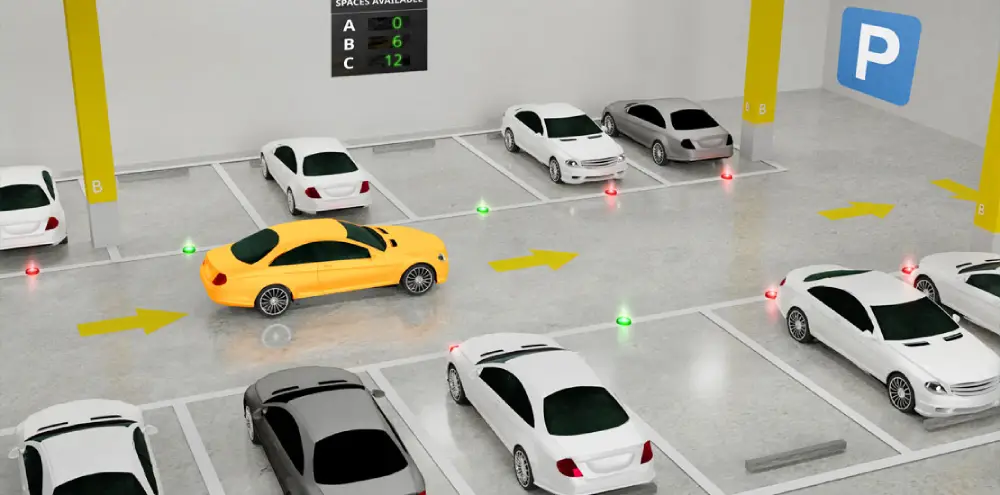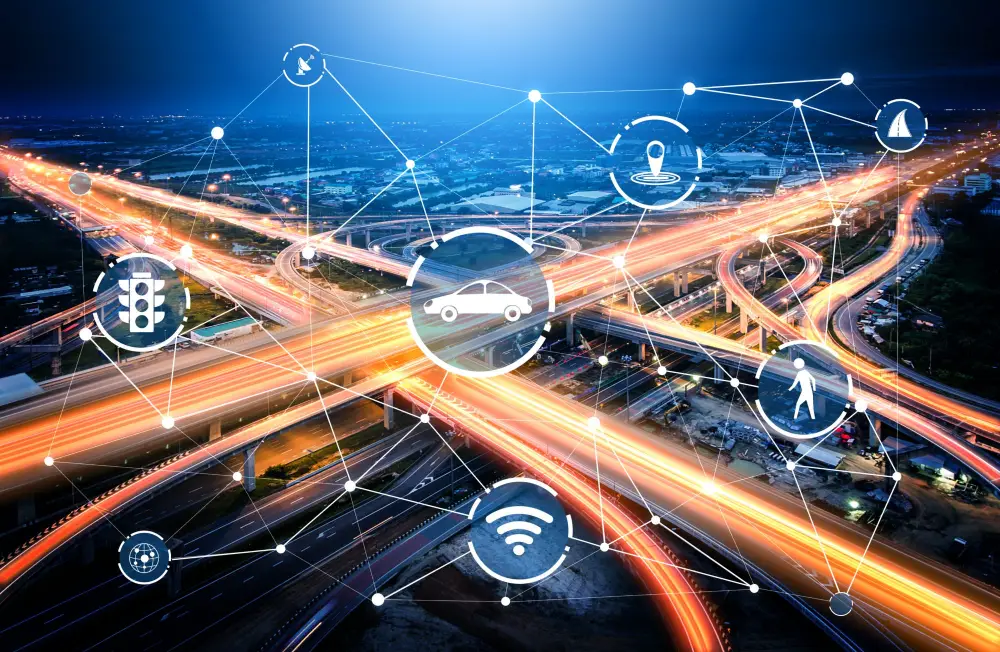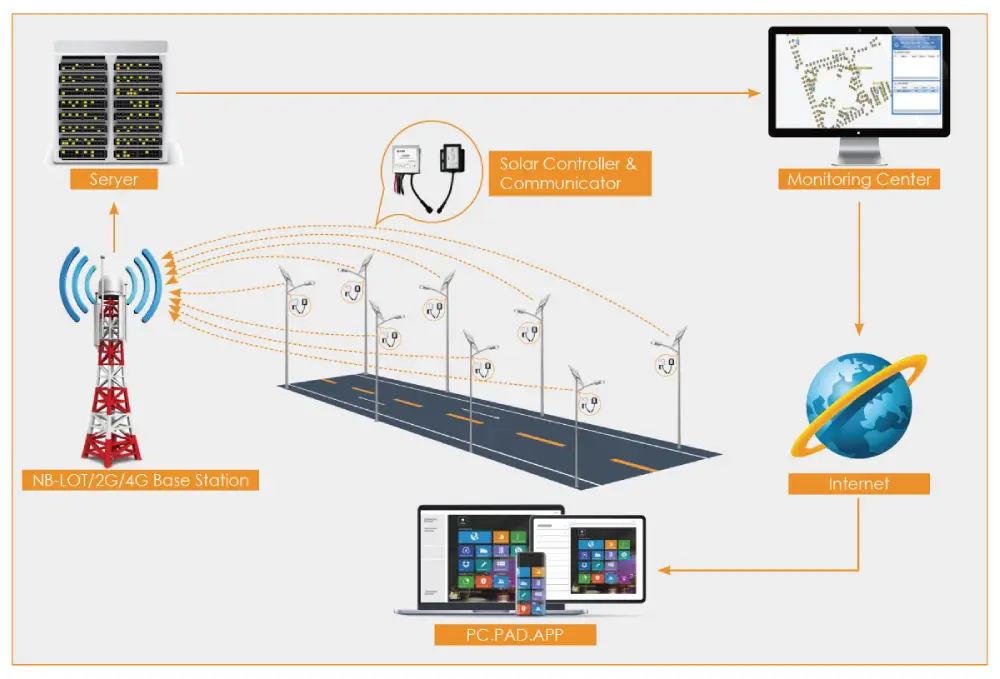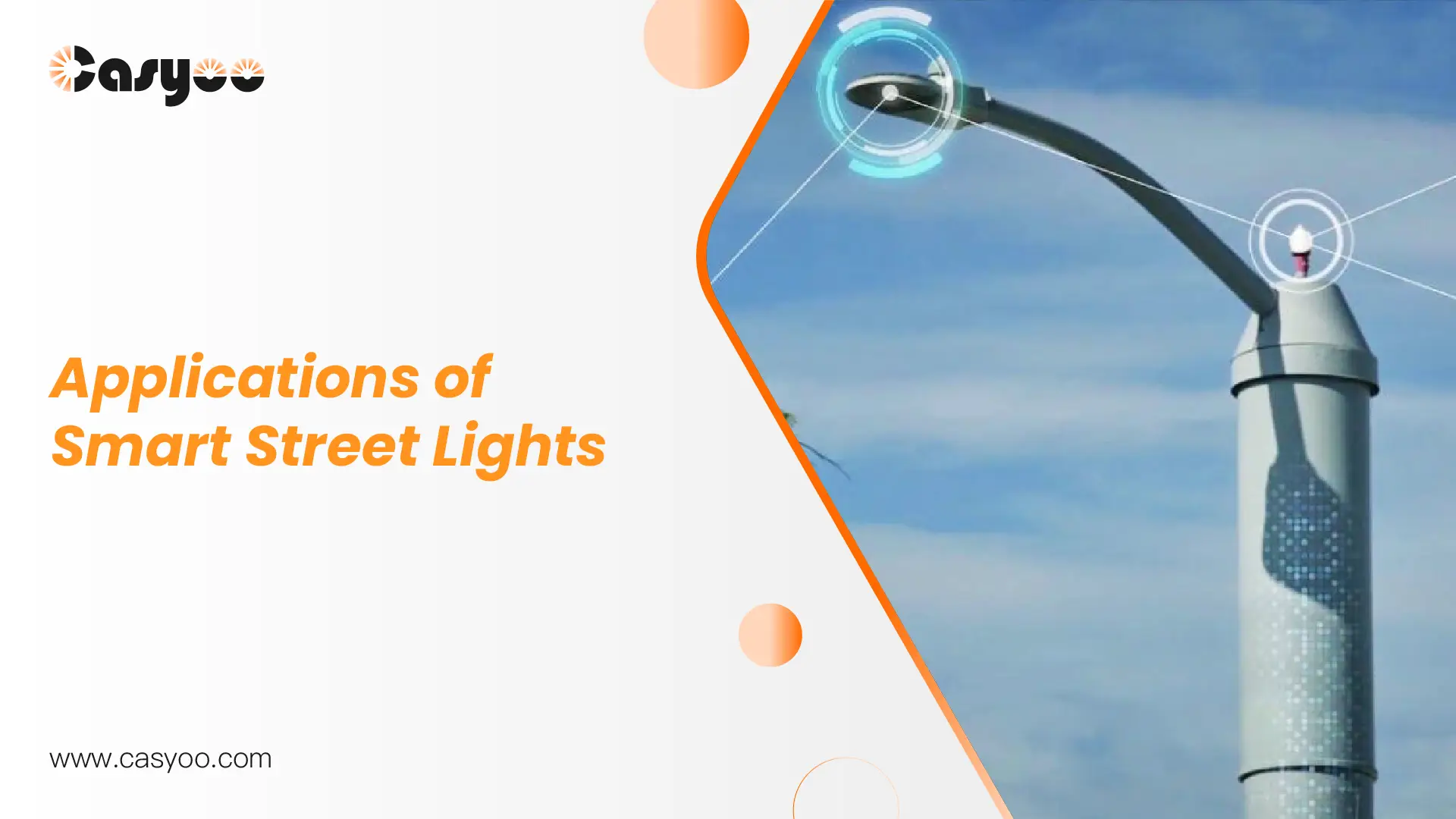Street lights may look inconspicuous, but they are important for cities and can represent the urban image. These days, the street lighting system has been updated with the development of cities. However, they can no longer meet the needs of energy conservation and emission reduction in smart cities for the following reasons: First, due to the wide distribution of street lights and poor management, street light failure and cable theft often occur. Second, as traditional street lighting systems often have only one switch that controls all street lights, it is hard to accurately control an individual or part of the street lights. What’s more, monitoring the situation on the road is also difficult to realize. This makes the traditional lighting system inefficient and costly.
From incandescent to LED lights, experts have tried applying various light sources to street lights. With the development of the Internet of Things and the needs of modern cities, the key to street light upgrading has shifted from optimizing illumination to developing smart and energy saving street lights.
What is a smart street light?
Smart street lights are composed of cameras, charging piles, LED display screens, environmental data collection sensors, and other equipment, with the pole being the carrier of these components. Their main function is lighting up the streets, and they are also responsible for the collection and display of different types of data. Thanks to Internet of Things technology, smart street lights can timely send the collected data to the cloud. Smart street lamps have become the main information collection terminals and an important part of smart cities.
5 smart street lights applications in modern cities
Smart street lamps integrate many functions. Only by applying these functions to various applications of smart cities can these functions be fully utilized. The following are some applications of smart street lamps:.
1. Smart parking

The smart camera on the smart street lamp can effectively identify the car entering and leaving the parking space, record the license plate, and transmit the information to the center cloud.
2. Smart urban management
Using the smart camera, broadcasting, smart lighting, information display, and other functions, smart street lights can be a medium for the city manager to monitor and stop illegal sales, littering, illegal parking, etc.
3. Ensuring safety
The face recognition camera, emergency alarm, and other components integrated in the smart street lamp can realize face recognition and a smart alarm when an emergency happens.
4. Smart transportation monitor

The smart street lamp can make use of its camera and monitor to report information like traffic flow to the center control platform.
5. Smart industrial park management
Smart street lights in the industrial park can connect to WiFi, monitor, broadcast, send alarms, charge electric motorcycles, etc.
For the future, we can imagine that, under the premise of not affecting the urban layout and ensuring the lighting function, the smart street light can be a tool for citizens to check road and weather conditions. They may also achieve all-round monitoring, integrating communication, environmental perception, LED display, emergency assistance, broadcast, public WiFi, smart charging, public facilities management, and other functions.
|
Application |
Function |
|
Smart Parking |
License plate recognition & parking space monitoring |
|
City Management |
Cameras & speakers deter illegal activities (vending, littering, etc.) |
|
Public Safety |
Facial recognition & emergency alarms |
|
Traffic Monitoring |
Real-time traffic flow & congestion tracking |
|
Industrial Parks |
WiFi, surveillance, EV charging, & alerts |
How to conveniently manage smart street lights

Centralized control for smart street light management
In the future, a large number of smart street lights will be set in a wide range. In order to achieve unified maintenance and intelligent management, we need to collect data and use digital information. To prevent problems caused by equipment aging and loss, it is necessary to centrally control all street lights within a certain range, monitor the data they send, analyze abnormalities intelligently, and alarm for faults.
Three-dimensional visualization can help us understand complex and abstract data more easily and truly promote smart street lights.
Cloud-based monitoring platform
Thanks to IoT street lighting technology, we can use a reliable cloud system that has powerful computing capability and a control platform. The computing system can classify and organize the huge data collected by multiple street lights, delete invalid information, and upload useful information to the control platform. The staff can check the road conditions in real time and deal with some emergencies in time. What’s more, connecting the system to solar controllers elevates off-grid installation energy performance.
Automated adaptive lighting
There are also many automatic management systems for smart street lights. These systems can monitor whether there are cars on the road and whether there are pedestrians passing by. The smart street lights will switch on as cars or pedestrians pass by. This can lower light pollution and save a significant amount of electricity.
Conclusion
As an important part of the smart city, the smart street light visualization management system provides a powerful means for city planners to conduct urban management and scientific decision-making. We believe that in the near future, smart street lights will light up more cities. Are you ready to improve the infrastructure in your city with one of the best smart street lighting companies ? Get in touch with Casyoo right now for a smart street lighting solution!




